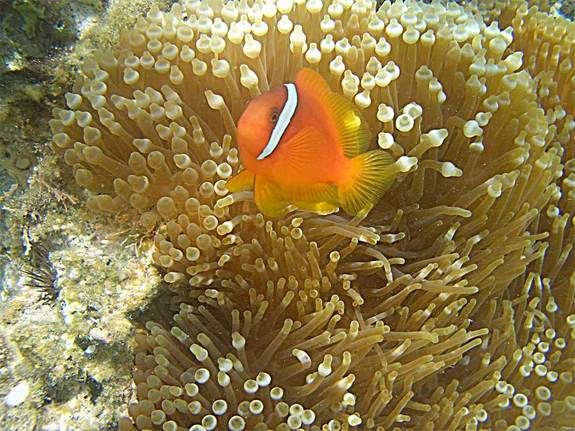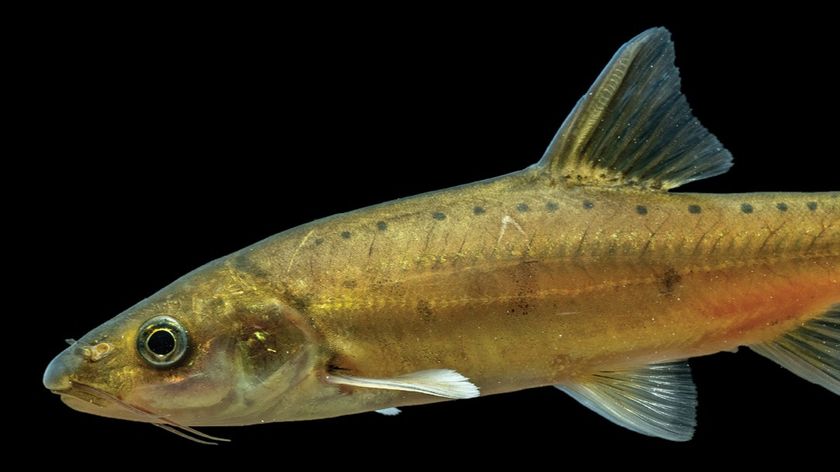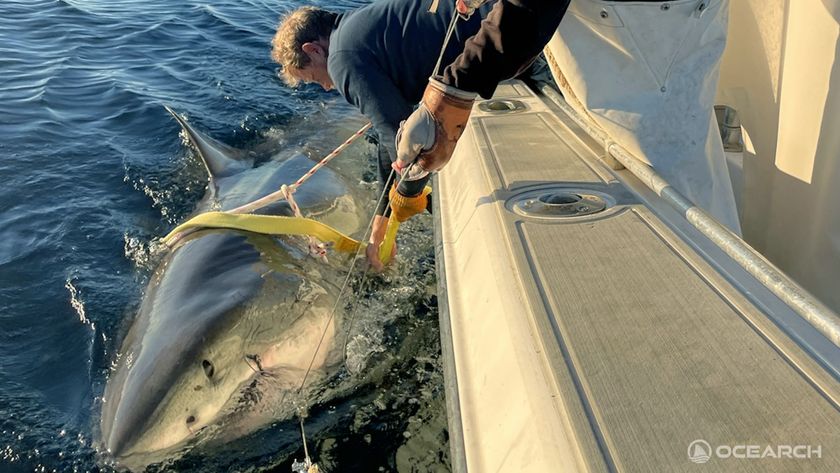
Clownfish do a wiggle dance to increase seawater circulation to their sea anemone hosts, helping the sea creatures breathe, a new study suggests.
The findings, published today (Feb. 27) in the Journal of Experimental Biology, suggest the clownfish and sea anemone relationship may be more of a two-way street than previously thought. (Clownfish live in the wavy tentacles of sea anemones, stationary animals that typically live on the seafloor or coral reefs and are related to corals and jellyfish.)
"This is the first time we've ever discovered that the clownfish can actually help the sea anemones to breathe and can help them to aerate themselves," said study co-author Nanette Chadwick, a marine biologist at Auburn University.
It also suggests that anemones can live in so many habitats in part because of the clownfish. Anemones can thrive in stagnant water because clownfish dances, in which they flap their fins while dodging and turning while nestled deep in the anemone, circulate the water for the creatures, providing them with needed oxygen, Chadwick said. [Marine Marvels: Spectacular Photos of Sea Creatures]
One-way street?
It's long been known that the highly conspicuous, neon-colored clownfish would be lost without its anemone home. They can't swim very fast and are often gobbled up by predatory fish such as grouper or barracuda as soon as they venture outside of the refuge, Chadwick told LiveScience.
The sea anemones also produce a toxin that deters clownfish predators. The orange-and-white fish avoids the toxin by slathering itself in anemone mucus. The anemone sees the fish as part of itself and lets clownfish shelter between its tentacles.
Sign up for the Live Science daily newsletter now
Get the world’s most fascinating discoveries delivered straight to your inbox.
Until now, most scientists thought the benefits went one way — from anemone to clownfish.
But Chadwick and her colleagues wondered whether, like coral fish and other fish species, the clownfish also benefit the sea anemones, by ventilating them.
To find out, the team gathered sea anemone and clownfish from the Red Sea near Aqaba, Jordan, and put them in a flow tank to see how much oxygen they used, both separately and together.
Together, the two species used up more oxygen than either could on their own. But the two had to be touching for this to happen, Chadwick said.
Wiggle dance
To understand why, the team spent hours filming the behavior of the clownfish within the sea anemone.
It turned out the clownfish performed a bizarre little wiggle dance, flapping its fins while dodging and turning.
"That appears to be kind of fluffing up the anemone," Chadwick said.
That creates fresh water circulation for the stationary anemone, allowing it to access more oxygenated water, speed up its metabolism, and grow faster. That's also good news for the clownfish, which have more room to hide within the anemone.
Conservation implications
The findings have implications for the tropical fish trade, Chadwick said. Typically, fishermen harvest all the clownfish in an anemone.
But when they do that, "they doom the anemone to die," she said.
Instead, fishermen should take just one or two clownfish while leaving the others to ventilate the anemone.
Of course, the most sustainable approach would be to buy aquarium fish that were grown in a lab or aquaculture — leaving all the anemones and the clownfish alone, she said.
Follow Tia Ghose on Twitter @tiaghoseor LiveScience @livescience. We're also on Facebook & Google+.

Tia is the managing editor and was previously a senior writer for Live Science. Her work has appeared in Scientific American, Wired.com and other outlets. She holds a master's degree in bioengineering from the University of Washington, a graduate certificate in science writing from UC Santa Cruz and a bachelor's degree in mechanical engineering from the University of Texas at Austin. Tia was part of a team at the Milwaukee Journal Sentinel that published the Empty Cradles series on preterm births, which won multiple awards, including the 2012 Casey Medal for Meritorious Journalism.











